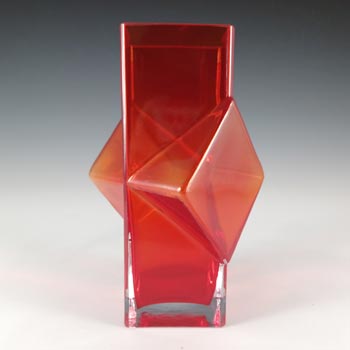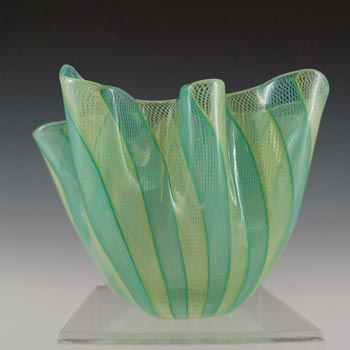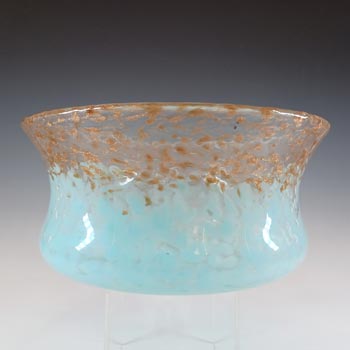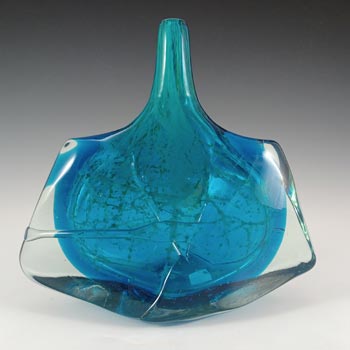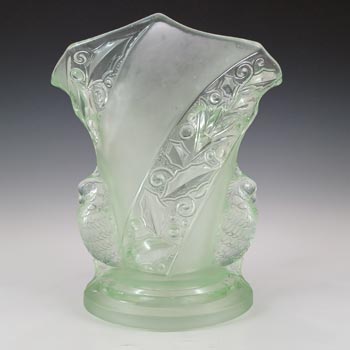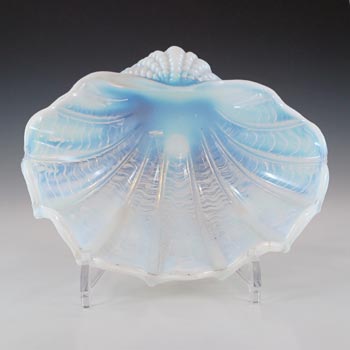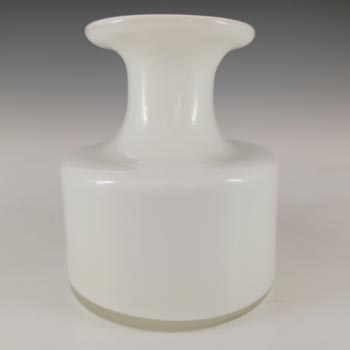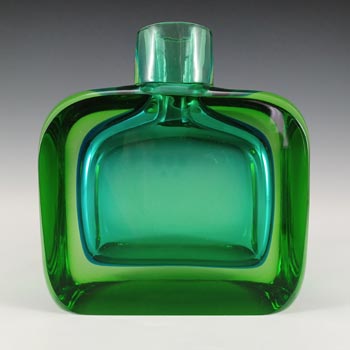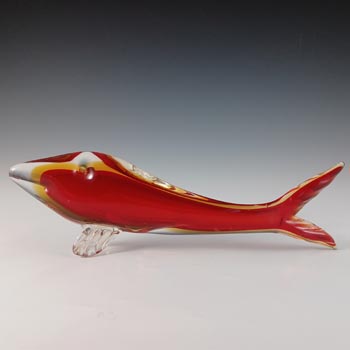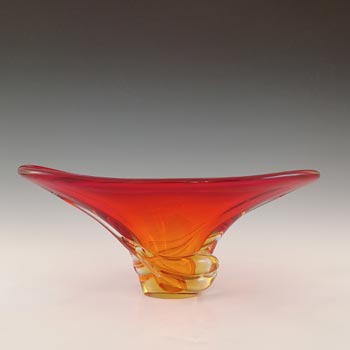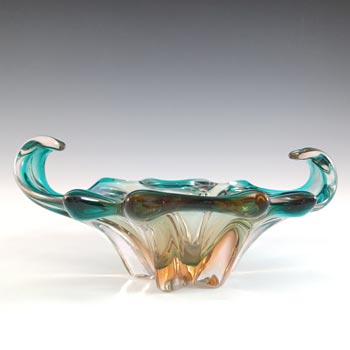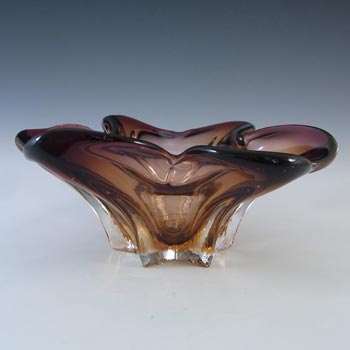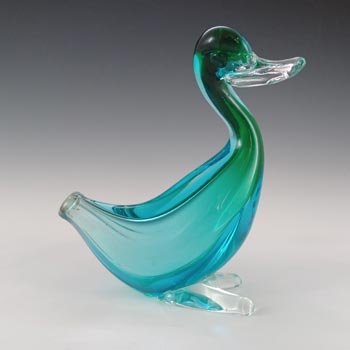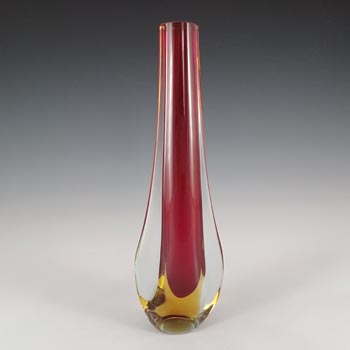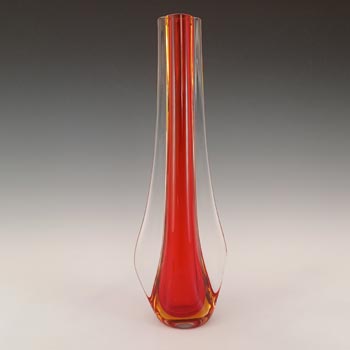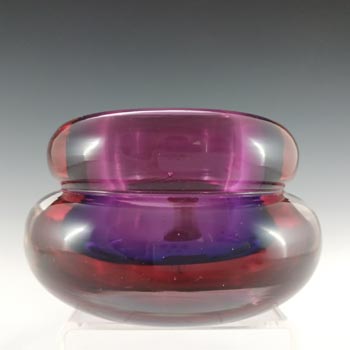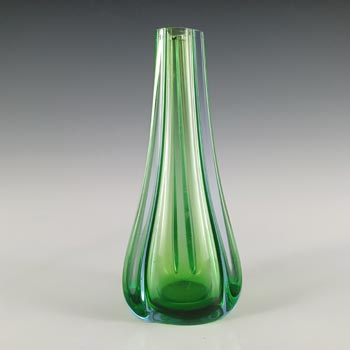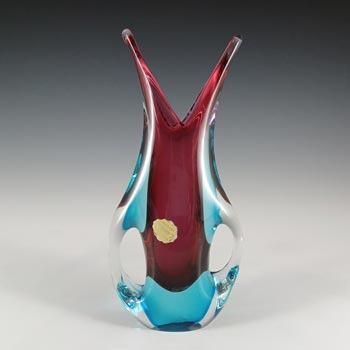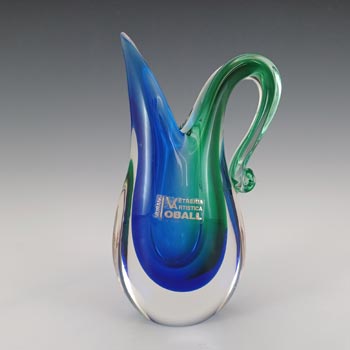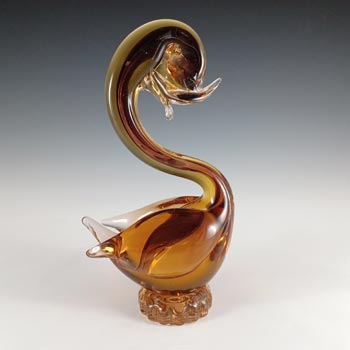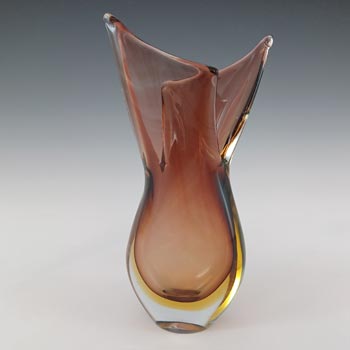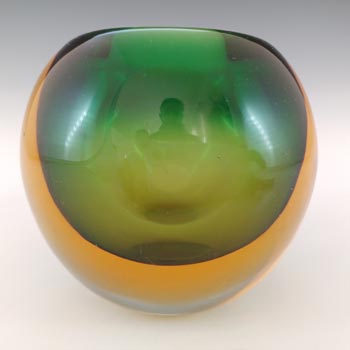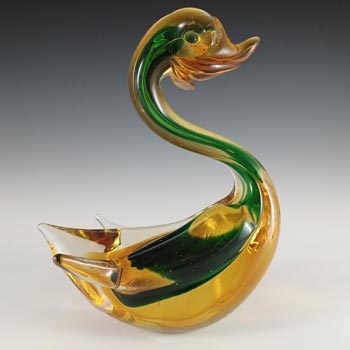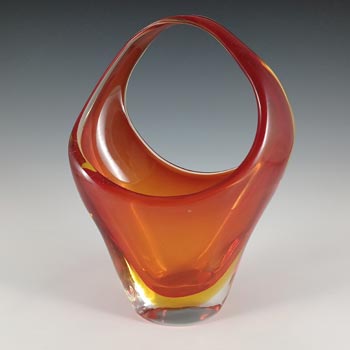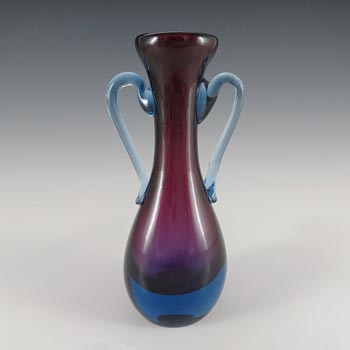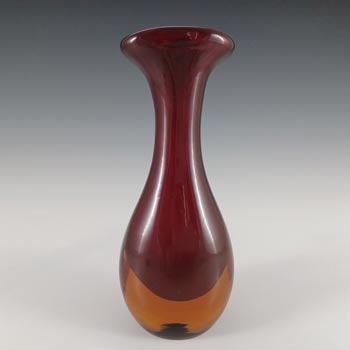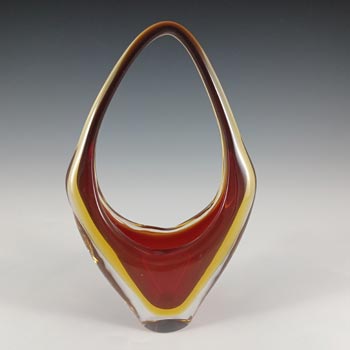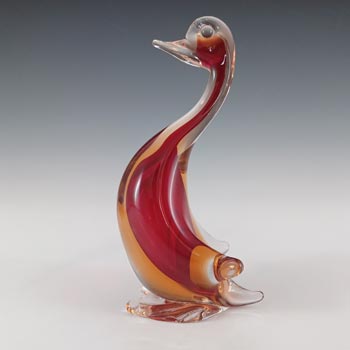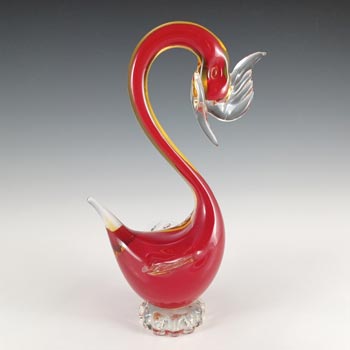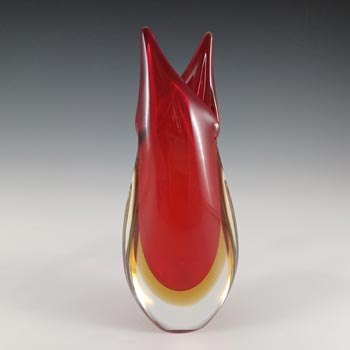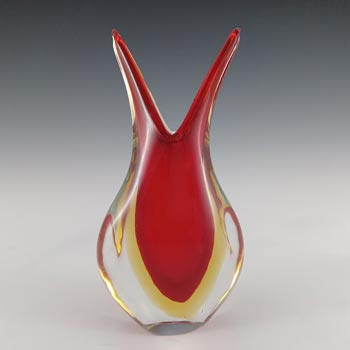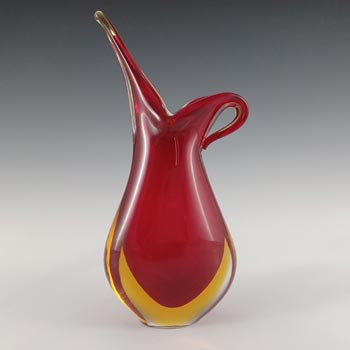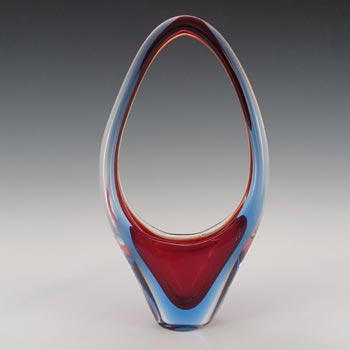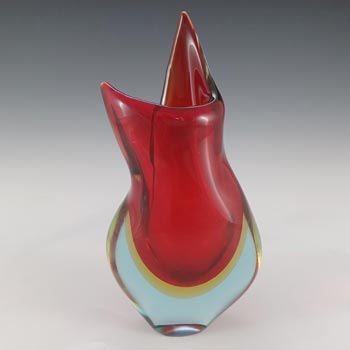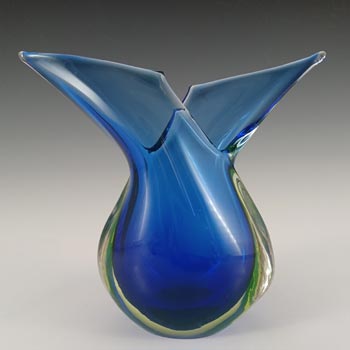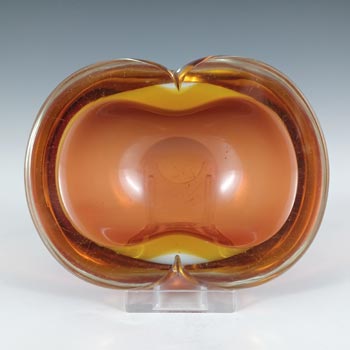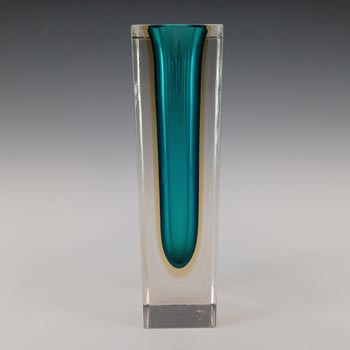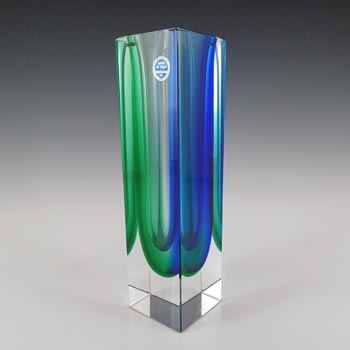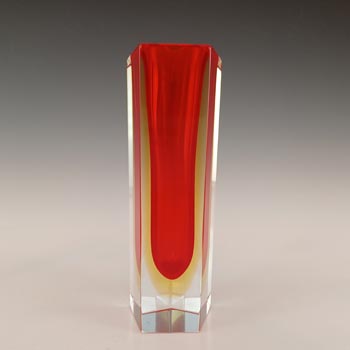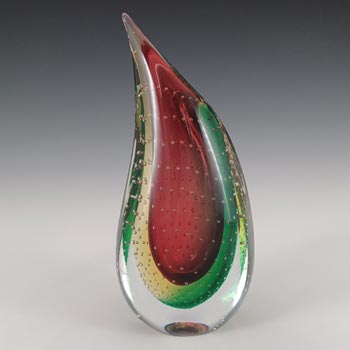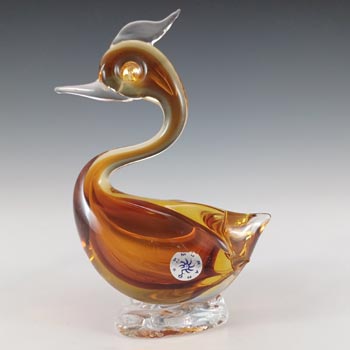The sommerso technique was originally developed in the 1930's by Carlo Scarpa at Venini & Co. Sommerso (Italian for "submerged") is the Murano glassmaking technique of creating two or more layers of contrasting glass without the colours mixing together. It is formed by dipping coloured glass into molten glass of a different colour, before blowing the glass into the required form. The outermist layer is often clear. During the 1950's the sommerso style became world famous due to the work of Flavio Poli, artistic director of Seguso Vetri d'Arte. There have since been many other factories in the Murano region which have made pieces in this style, and as such it is difficult to be certain of the manufacturer without labels or signatures present. Other well known manufacturers that have produced glassware in the sommerso style include Mandruzzato, Galliano Ferro, Formia, Oball, and Arte Nuova.
Categories
- CLEARANCE SALE 20% OFF (107)
- Italian Murano Glass (228)
- Archimede Seguso (4)
- Arte Nuova (4)
- Aureliano Toso
- AVEM (9)
- Barbini (10)
- Barovier & Toso (3)
- Bucella Cristalli
- Carlo Moretti (3)
- Cenedese
- Cristallo Venezia CCC (5)
- Ferro & Lazzarini (3)
- Ferro Italarts
- Fratelli Toso (6)
- Galliano Ferro (6)
- L Nason (1)
- Mandruzzato
- Oball (5)
- Salviati (14)
- Seguso Vetri d'Arte (3)
- V. Nason & C. (4)
- Venini (4)
- Vetro Artistico Veneziano (4)
- Murano Faceted (4)
- Murano Geodes (4)
- Murano Sommerso (58)
- Murano Zanfirico (21)
- Other Murano (53)
- Italian Empoli Glass (23)
- Scandinavian Glass (91)
- British Glass (203)
- Czech / Bohemian Glass (64)
- Maltese Glass (38)
- German & Austrian Glass (15)
- Japanese Glass (22)
- Spanish Glass (8)
- Romanian Glass (10)
- Chinese Glass (16)
- Victorian Glass (21)
- Art Nouveau Glass (7)
- Art Deco Glass (60)
- Glass Animals (120)
- Glass Paperweights (45)
- Cloud Glass (3)
- Depression Glass (1)
- Uranium Glass (9)
- Opalescent Glass (13)
- Neodymium Glass (7)
- Other Glass (12)
- Specials ...
- New Products ...
- Featured Products ...
- All Products ...
Displayed Currency:
Featured Products
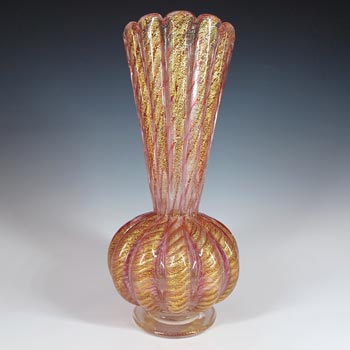
LARGE Barovier & Toso Murano Cordonato d'Oro Gold Leaf Vintage Glass Vase
£495.00 £395.00
Save: 20% off
Save: 20% off
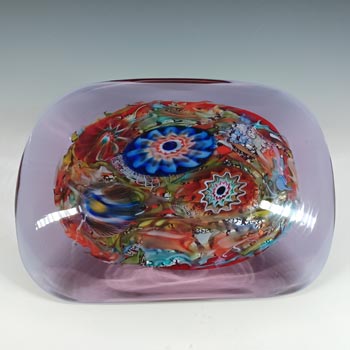
RARE LABELLED Galliano Ferro Murano Lilac Glass Slab Sculpture
£395.00 £295.00
Save: 25% off
Save: 25% off
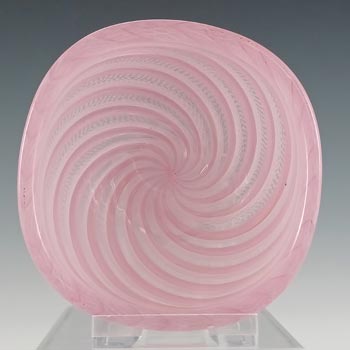
Venini Murano Pink & White Glass Zanfirico Bowl by Carlo Scarpa
£395.00 £295.00
Save: 25% off
Save: 25% off
Who's Online
There currently are 340 guests online.
Murano Sommerso
Murano Sommerso glass - shown below is our current range of vases, bowls and other decorative vintage collectable Venetian glassware in the sommerso style from Murano, Venice, Italy.
The sommerso technique was originally developed in the 1930's by Carlo Scarpa at Venini & Co. Sommerso (Italian for "submerged") is the Murano glassmaking technique of creating two or more layers of contrasting glass without the colours mixing together. It is formed by dipping coloured glass into molten glass of a different colour, before blowing the glass into the required form. The outermist layer is often clear. During the 1950's the sommerso style became world famous due to the work of Flavio Poli, artistic director of Seguso Vetri d'Arte. There have since been many other factories in the Murano region which have made pieces in this style, and as such it is difficult to be certain of the manufacturer without labels or signatures present. Other well known manufacturers that have produced glassware in the sommerso style include Mandruzzato, Galliano Ferro, Formia, Oball, and Arte Nuova.
The sommerso technique was originally developed in the 1930's by Carlo Scarpa at Venini & Co. Sommerso (Italian for "submerged") is the Murano glassmaking technique of creating two or more layers of contrasting glass without the colours mixing together. It is formed by dipping coloured glass into molten glass of a different colour, before blowing the glass into the required form. The outermist layer is often clear. During the 1950's the sommerso style became world famous due to the work of Flavio Poli, artistic director of Seguso Vetri d'Arte. There have since been many other factories in the Murano region which have made pieces in this style, and as such it is difficult to be certain of the manufacturer without labels or signatures present. Other well known manufacturers that have produced glassware in the sommerso style include Mandruzzato, Galliano Ferro, Formia, Oball, and Arte Nuova.

